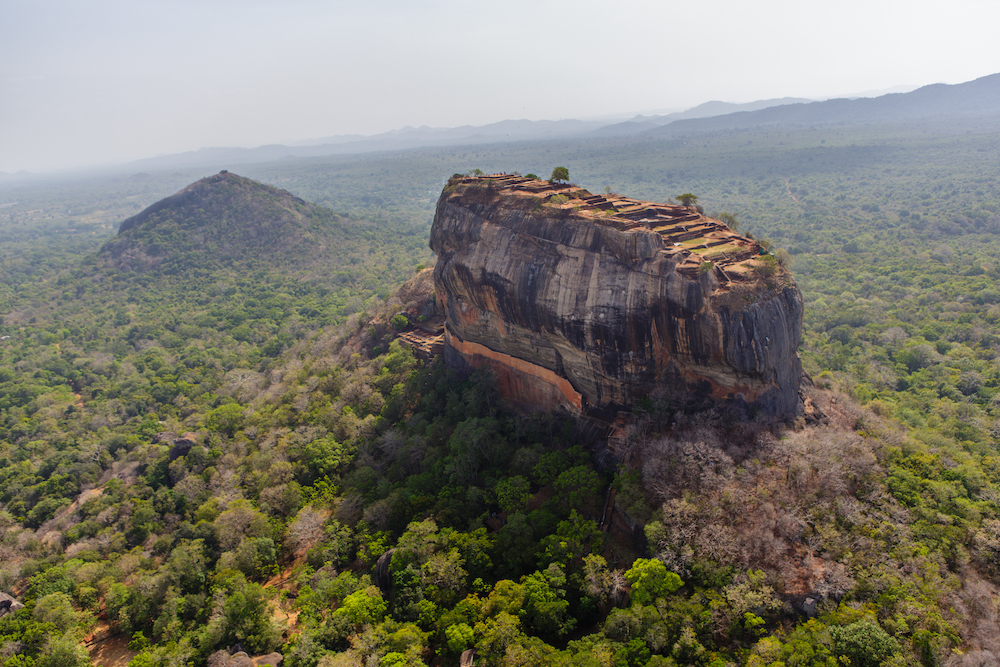Sigiriya
The most popular World Heritage Site and ‘the eighth wonder of the world’ Sigiriya, is one of the most remarkable archaeological sites of a stupendous rock fortress. It is covered with beautiful frescoes of celestial maidens earning it the description as the world’s largest picture gallery. A series of pools, channels and fountains make up the pleasure gardens of Sigiriya and still boast of Sri Lanka’s hydraulic sophistication back then.
The Sigiriya Rock Fortress itself has its unique identity due to its shape not found anywhere else in the island and can be recognized miles away from the distance. Sigiriya rock towering 200m rises above the thick jungle in the central plains of Sri Lanka. Buddhist monks were housed in its caves around the third century. King Kashyapa transformed it into the impressive fortress in the fifth century to defend himself against invading armies. Among the grounds lies the Rangiri Dambulla Cave Temple. A 22-century tradition of spiritual pilgrimage. There are five sanctuaries in the subterranean monastery. In Sri Lanka, one of the biggest and best-preserved cave temples.
Top Attractions near Sigiriya

Sigirya Frescoes
There are around 21 paintings in this area and it is believed to be the Fresco-Lustro method used for these paintings. All these paintings are of young and old female figures and there are no two similar figures among them. They are popularly called as ‘Sigiri Apsara’. The frescoes were painted using natural pigments on a prepared plaster surface and were protected by an overhanging rock ledge.

Water Gardens
An irrigation wonder, the high level of Water technology knowledge during this period can be assessed from the construction work that remains still in working condition. The Water Gardens consist of a series of interconnected pools, fountains, and canals that were designed to create a sense of harmony and tranquility.

Mirror Wall
The Mirror Wall is a smooth, polished wall made of a type of plaster that has been polished to a high sheen, giving it a mirror-like appearance. Sigiriya Mirror Wall consists of Sinhala Poems from the 7th to the 10th centuries AD. These were written by the people who came to see Sigiriya during those long years. These are called as “Sigiri kurutu gee” by the local population.

Boulder Garden
These areas which have numerous rock boulders were landscaped to give an appearance of a Rock Boulder Garden during the King’s rein. Today, visitors can explore the boulder gardens and marvel at their natural beauty and intricacy. Overall, the Sigiriya Boulder Gardens are a testament to the creativity and ingenuity of the ancient Sinhalese engineers and landscape architects.
GALLERY



